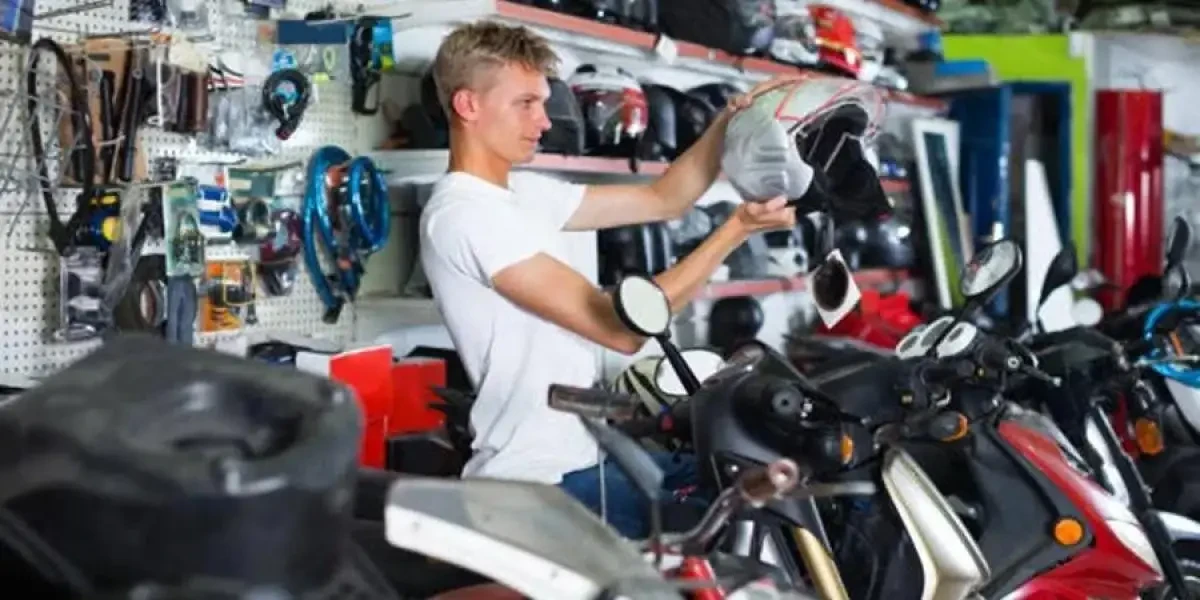Must-Have Motocross Gear: Raise Your Riding Experience Today
Must-Have Motocross Gear: Raise Your Riding Experience Today
Blog Article
Understanding the Crucial Parts of a Bike: A Comprehensive Guide for Fanatics
For motorcycle enthusiasts aiming to elevate their riding experience and guarantee their bikes run efficiently, understanding the vital elements of a motorbike is vital. Each aspect, from the engine's intricate workings to the crucial function of the braking mechanisms, not just affects performance yet likewise security and comfort. This overview will certainly stroll via the essential parts that every motorcyclist should recognize with, allowing informed options in both upkeep and potential upgrades. As we start this expedition, one must ask: just how does each element engage to produce the smooth trip every fanatic looks for?
Engine Parts

The camshaft plays a vital duty in regulating the timing of the engine's shutoffs, making certain the specific opening and closing required for reliable gas and air intake, as well as exhaust expulsion. This timing is important to maintaining ideal engine performance and performance. Additionally, the carburetor or fuel shot system, depending on the bike version, is accountable for blending air with fuel in the appropriate ratio for combustion.
The air conditioning system, either air or liquid-based, works to keep the engine's temperature within operational limitations, preventing overheating and ensuring longevity - motocross parts nz. Each element, thoroughly created and integrated, adds to the seamless procedure of the engine, defining the motorbike's power output and general efficiency
Transmission System
Essential to the motorcycle's functionality, the transmission system makes sure reliable power transfer from the engine to the wheels. This system makes up a number of essential components, consisting of the clutch, gearbox, and last drive, each playing an important role in converting the engine's power into motion. The clutch, commonly operated by a hand lever, offers to disengage the engine and involve from the transmission, enabling for smooth gear modifications and regulated acceleration.
The transmission, frequently referred to as the transmission correct, has a set of equipments that bikers can by hand move through to change the bike's rate and torque output. These equipments are arranged in a series that makes it possible for the bike to increase efficiently and preserve optimum engine performance across various rates. Most motorcycles use a consecutive gearbox, needing the cyclist to move equipments in a fixed order.
Braking Mechanisms
While recognizing the transmission system is vital to utilizing a motorcycle's power, equally crucial is the capacity to manage and quit that power effectively, which is where stopping systems enter into play. Brakes are vital for safety and security and performance, offering the cyclist with the necessary control to browse various terrains and conditions. Typically, bikes feature 2 kinds of braking systems: disc brakes and drum brakes.
Disc brakes are more widespread in contemporary motorbikes because of their remarkable performance. They consist of a brake disc, caliper, top article and pads. When triggered, the caliper squeezes the brake pads against the spinning disc, transforming kinetic power right into warmth, thus slowing down the wheel. This system supplies far better warmth dissipation, constant performance, and boosted quiting power, specifically in wet conditions.
Alternatively, drum brakes, though much less common, are still found in some motorcycles. They function by pushing brake footwear versus the inner surface of a drum affixed to the wheel. While normally much less effective in heat dissipation and stopping power, drum brakes are simpler and much more cost-efficient.
Comprehending these stopping systems' nuances allows riders to keep their motorbikes effectively and value the engineering that makes certain secure and reliable quiting.
Suspension and Steering
Suspension and guiding systems are crucial elements that dramatically affect a motorcycle's handling and ride convenience. The shock absorber, consisting of forks at the front and shock absorbers at the back, absorbs roadway irregularities, improving security and control. Front forks, inverted or commonly telescopic, compress and rebound to alleviate impacts, while back shock absorbers preserve tire call with the roadway, vital for grip and security.
Guiding, focused around the handlebars, attaches the rider to the motorcycle's directional control. The steering head bearings visit our website guarantee smooth procedure, permitting specific maneuverability. Appropriate placement and maintenance of these bearings are important for foreseeable guiding action and decreasing cyclist fatigue.
The suspension's adjustability is an additional important element; preload, damping, and rebound setups permit customization to suit different riding problems and styles. This flexibility is essential for optimizing performance, whether browsing metropolitan roads or dealing with sturdy tracks. Developments like digital suspension systems offer real-time changes, improving trip quality throughout diverse terrains.

Electrical Equipments
After making certain a controlled and smooth trip via effective suspension and guiding systems, interest transforms to the electrical systems, a crucial aspect of contemporary motorbikes. These systems play a vital role not only in starting the engine however also in powering various components that boost the performance and safety of the motorbike.
At the heart of a bike's electrical system is the battery, which stores electric energy required for starting the engine and powering supporting systems - motocross gear nz. The alternator or generator, combined with the rectifier-regulator, guarantees the battery stays charged while the motorcycle is in procedure, transforming mechanical power into electric power and preserving voltage degrees
The ignition system, one more vital element, is accountable for stiring up the air-fuel combination in the engine's cyndrical tubes. her response Modern bikes frequently make use of an electronic ignition system, supplying higher effectiveness and dependability contrasted to traditional systems.
Illumination systems, consisting of headlights, tail lights, and indications, are also crucial, making certain visibility and security for the cyclist. Added electronic components such as sensors, control devices, and shows add to innovative attributes like gas injection management, anti-lock stopping systems (ABDOMINAL MUSCLE), and digital dashboards, better enhancing the riding experience.
Conclusion
A detailed understanding of a motorcycle's necessary parts, consisting of the engine, transmission system, braking devices, suspension, steering, and electric systems, is vital for lovers aiming to maximize convenience, performance, and security. Mastery of these aspects permits educated choices regarding upkeep and upgrades, ultimately enhancing the riding experience. By integrating this expertise, riders can guarantee their motorbikes run at peak effectiveness and dependability, therefore taking full advantage of both pleasure and longevity of their vehicles.
For bike enthusiasts looking to raise their riding experience and ensure their bikes run efficiently, understanding the crucial components of a motorcycle is vital.Integral to the motorcycle's performance, the transmission system makes sure effective power transfer from the engine to the wheels.While recognizing the transmission system is key to taking advantage of a bike's power, equally important is the capability to manage and quit that power effectively, which is where braking devices come right into play. Commonly, motorcycles include two kinds of braking systems: disc brakes and drum brakes.
A thorough comprehension of a motorcycle's necessary components, consisting of the engine, transmission system, stopping devices, suspension, guiding, and electric systems, is indispensable for lovers intending to optimize performance, safety, and comfort.
Report this page